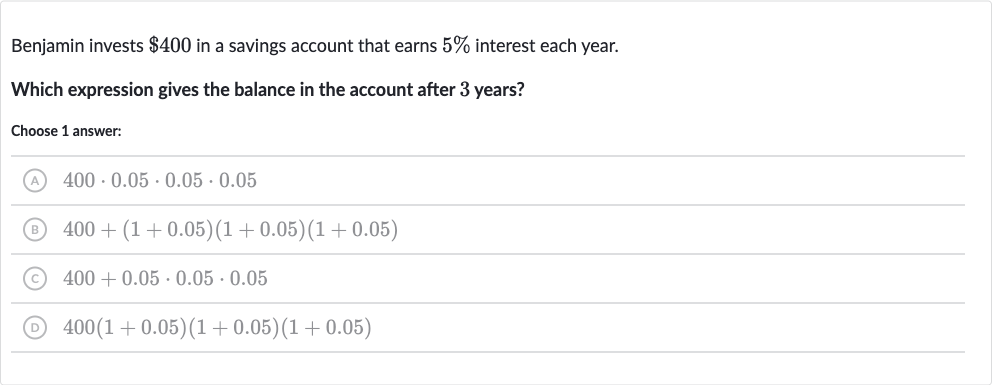Full solution
Q. Benjamin invests in a savings account that earns interest each year.Which expression gives the balance in the account after years?Choose answer:(A) (B) (C) (D)
- Identify Formula: Identify the formula for compound interest, which is , where is the amount of money accumulated after years, including interest, is the principal amount (the initial amount of money), is the annual interest rate (decimal), is the number of times that interest is compounded per year, and is the time the money is invested for in years. Since the problem does not specify the compounding frequency, we assume it is compounded once per year (). Therefore, the formula simplifies to .
- Substitute Values: Substitute the given values into the simplified compound interest formula. Here, , or as a decimal, and years. So the expression becomes .
- Check Answer Choices: Check the answer choices to see which one matches the expression . The correct choice is (D) .
More problems from Volume of cubes and rectangular prisms: word problems
QuestionGet tutor help
QuestionGet tutor help
QuestionGet tutor help
QuestionGet tutor help
QuestionGet tutor help
QuestionGet tutor help
QuestionGet tutor help
QuestionGet tutor help
QuestionGet tutor help

